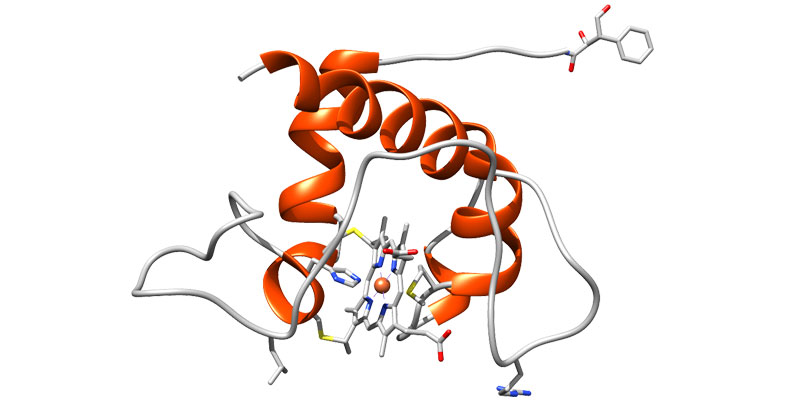
Chemical and Structural Biology
Chemical and Structural Biology is a major focus of YBRI’s interdisciplinary biomedical research. The strength of this research area lies in the use of chemical tools and approaches that are tailored to answering specific biological questions.
This cross-cutting theme brings together physical scientists who have expertise in the development of innovative chemical probes and technologies with life science researchers who apply such tools to address problems of fundamental biological and biomedical interest. In the area of structural biology, YBRI has particular strength in elucidating the functions and mechanisms of proteins of relevance to human disease (Brozowski, Davies, Wilkinson), studying protein-nucleic acid interactions, viral assembly and gene expression (Antson, Plevin, Twarock, Hill) and deciphering microbial bioenergetic systems (Blaza).
Research interests in chemical biology include the development of bioconjugation reactions for understanding and treating disease (Fascione, Spicer), chemical probes for studying and manipulating carbohydrate active enzymes in relation to a variety of human disorders (Davies, Willems), and the role of transition metal ions in biology and medicine (Duhme-Klair).
The cutting-edge chemical tools and techniques developed by these researchers are further applied in a variety of biomedical contexts through close collaborations with biologists, (bio)medical scientists and physicists. For example, new probes are generated to decipher the molecular properties of cell surface receptors and glycoconjugates (Signoret, Baumann), to investigate the regulation of gene expression by nuclear receptors (Holding) and to study the evolving proteome in stem cell development (Grey). Another key application of chemical tools is in the discovery and validation of drug targets, for example in the context of cancer (Signoret, Holding, Grey) and neglected tropical diseases (Mottram). Other researchers have interests in using chemical tools to study DNA supercoiling and DNA:protein recognition (Noy) and to facilitate the investigation of cellular recognition processes (Wright).
Contact us
York Biomedical Research Institute
ybri
Department of Biology, Wentworth Way, University of York, York, YO10 5NG
@@YBRI_UoY
Other areas of chemistry research closely tied to the cross-cutting theme of chemical and structural biology involve the development of synthetic methods for drug discovery (O’Brien) and spectroscopic methods to study biomolecular and biochemical processes (Blaza, Hunt, Duckett).
The cutting edge chemical tools and techniques developed by these researchers are further applied in a variety of biomedical contexts through close collaborations with biologists, (bio)medical scientists and physicists. For example, new probes are generated to decipher the molecular properties of cell surface receptors and glycoconjugates (Signoret, Baumann), to investigate the regulation of gene expression by nuclear receptors (Holding), and to develop new disease targeting tools and validate drug targets in the context of cancer (Signoret, Holding) and neglected tropical diseases (Mottram). Others have interests in using chemical tools to study DNA supercoiling and DNA:protein recognition (Noy) and to facilitate the investigation of cellular recognition processes (Wright).
Contact us
York Biomedical Research Institute
ybri
Department of Biology, Wentworth Way, University of York, York, YO10 5NG
@@YBRI_UoY
